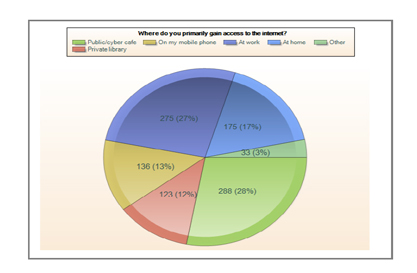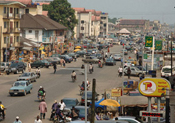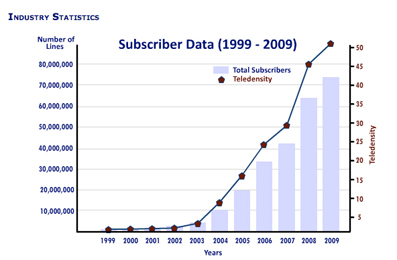




The expansion of the current information infrastructure in Nigeria to communities with limitations will eventually enhance the scope of the network society. And as majority of the population gain access to the Networked World, the entire community will be well informed, thus a network society is essential to community development.
People and Organizations Online (Stage 3)
According to Internet World Stats.com Internet users in Nigeria is approximately 23,982,2000 as of December 2009. Contributing factors to the number of Internet users in Nigeria include the widespread of cybercafés, resources centers in educational and research institutions across the states. In addition, effort and expansion of Internet usage to the rural parts of the country is improving. For example ChamsAccess limited, a subsidiary of Chams Plc in July 2010 announced an initiative to launch rural-based mobile Internet units across Nigeria. This initiative is expected to provide and attempt to improve IT-based transactions and network access to the rural communities. And according to ChamsAccess Project Manager, Biodun Ademoye, “the project entails the deployment of ChamsAccess booths and kiosks which have facilities for Internet browsing, ATM, point of sales terminals and complementary services such as telephony, e-ticketing, recharge card vending, bill payments among others”. There are other initiatives to promote ICT opportunities in Nigeria, thus improve the number of people online. One of such initiative is the Paradigm Initiative Nigeria (PIN), which started as an online volunteer team with the main objective of connecting Nigeria youth with ICT opportunities. PIN in collaboration with the Centre for Information Technology and Development (CITAD) conducted a survey in May 2009 on the lifestyle of Nigerians connected to the Internet. The findings of this survey revealed that one out of every five respondents do not own computers; while 35% claim to have only one computer and 36% have laptop in addition to their desktop computers. In terms of people online, according to the survey, “more people gain access from cybercafé and workplace (55% combined) while only 17% have access at home. Further, more than half of the respondents spend between one and five hours online. The following chart shows responds from the survey on how the average consumer gets access to the Internet.
Locally Relevant Content (Stage 2)
The literacy rate in Nigeria according to mapsofworld.com is 68% of the total population, and since English is the official language, evidently about half of Nigeria population has the ability to understand the English language in any form. Therefore, locally relevant content online, which usually is in English are consume by community members familiar with the contents. For example, emails, online chatting and social networking websites are the favored by Nigeria youth, and according to the PIN survey 2 in every 100 respondents claim not to have any functional email address and Yahoo is by far (80% to Gmail’s 36%) the most popular web-based email service. And that Facebook is by far the most popular social network website with 89% compared to Hi5’s 33% from the respondents. In addition to these relevant content information consumption, locally newspaper and magazine have established online section, thus this and other locally online information promote the growth of Internet usage.
The above section is on a stage 2 of the CID framework, because extensive research shows no website in the local language, and there are few websites covering local topics.
Information and Communication Technologies in Everyday Life (Stage 3)
Nigerians participation in the networked world is determined by the percentage of its population utilizing information and communication related devices in day-to-day operations. The following chart illustrates a teledensity rate tallied with the number of subscribers, indicating an estimate of communities participating in the connected network world.

From the above total subscribers, the assumption is that, ICT devices are incorporated into daily lives, and as such the penetration of these devices increase exponentially during the years. But compared to Nigeria’s population growth during the years, the assumption is that ICT penetration to certain communities with network infrastructure limitations is low. Therefore public shared network access facilities are alternate for individuals in these communities to tap into the network world.
The above section is on stage 3 level of the CID framework, because it seems ICT devices are incorporated into daily lives, and some members of the community have Internet access at home.
Information and Communications Technologies in the Workplace (Stage 3)
Nigeria’s participation in the global networked economy is established by the use of Information and communication technologies in governmental, private and the financial sector. For example most banks in Nigeria relies on information and communication technology to conduct daily operations, and as such online banking and other network access transactions are conducted in most financial institutions. Government agencies, and educational institution also utilize computers to conduct daily operations.
The above section on a stage 3 level of the CID framework, because in Nigeria some employees conduct research and business transactions over the web.
